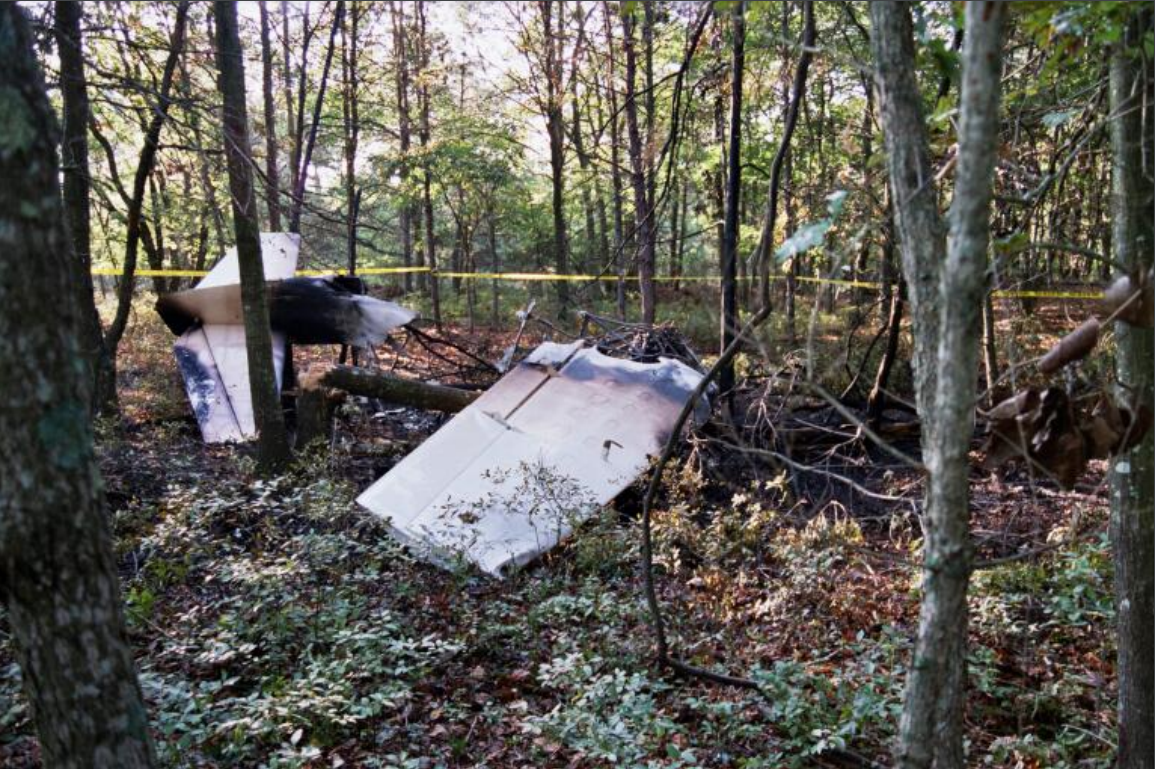
ASN Wikibase Occurrence # 45408
This information is added by users of ASN. Neither ASN nor the Flight Safety Foundation are responsible for the completeness or correctness of this information.
If you feel this information is incomplete or incorrect, you can submit corrected information.
| Date: | Monday 30 September 2002 |
| Time: | 15:35 |
| Type: |  Mooney M20E Super 21 |
| Owner/operator: | Private |
| Registration: | N5556Q |
| MSN: | 631 |
| Year of manufacture: | 1965 |
| Total airframe hrs: | 3993 hours |
| Engine model: | Lycoming IO-360 |
| Fatalities: | Fatalities: 1 / Occupants: 1 |
| Aircraft damage: | Destroyed |
| Category: | Accident |
| Location: | near Eagles Nest Airport (31E), West Creek, NJ -
 United States of America United States of America
|
| Phase: | Take off |
| Nature: | Private |
| Departure airport: | Eagles Nest Airport, NJ (31E) |
| Investigating agency: | NTSB |
| Confidence Rating: |
On September 30, 2002, about 1535 eastern daylight time, a Mooney M20E, N5556Q, was destroyed when it struck trees after takeoff from Eagles Nest Airport (31E), West Creek, New Jersey. The certificated private pilot was fatally injured. Visual meteorological conditions prevailed, and no flight plan was filed for the local personal flight conducted under 14 CFR Part 91.
Two witnesses reported that the pilot completed a preflight inspection of his airplane, but they could not confirm if he sumped the fuel tanks. They saw the airplane taxi to the 3,200-foot long, 60-foot wide, asphalt runway; and heard the engine run-up. The witnesses then observed the airplane begin a takeoff roll. As it passed behind trees, they did not see the airplane climb above the tree line. One witness heard a sputter, while the other witness heard the engine noise cease, with no roughness. They then heard the sound of impact. A third witness did not see the accident, but heard the engine race at full throttle, then the sound of impact. The airplane came to rest approximately 2,000 feet beyond the approach end of the runway, 1,200 feet prior to the departure end of the runway, and 176 feet to the right of the runway centerline. It was oriented nose down, in a near vertical attitude. Two freshly cut tree branches were located near the wreckage. One branch was approximately 1 inch in diameter, and the other branch was approximately 3 inches in diameter. One propeller blade exhibited chord-wise scratching, and an approximate 4-inch section of the tip was missing from the other propeller blade. Examination of the wreckage did not reveal any pre-impact mechanical malfunctions with the airframe or engine. Traces of water in were found in the fuel servo and fuel manifold. The airplane was not kept in a hangar. Approximately 1/2 inch of rain fell 4 days prior to the accident.
Probable Cause: The pilot's inadequate preflight inspection which failed to detect water-contaminated fuel, and his failure to maintain airspeed.
Accident investigation:
 |
|
Sources:
NTSB: https://www.ntsb.gov/_layouts/ntsb.aviation/brief.aspx?ev_id=20021004X05280&key=1
Location
Images:


Photos: NTSB
Revision history:
| Date/time | Contributor | Updates |
|---|---|---|
| 28-Oct-2008 00:45 | ASN archive | Added |
| 21-Dec-2016 19:24 | ASN Update Bot | Updated [Time, Damage, Category, Investigating agency] |
| 09-Dec-2017 17:49 | ASN Update Bot | Updated [Destination airport, Source, Narrative] |
Corrections or additions? ... Edit this accident description
The Aviation Safety Network is an exclusive service provided by:


 ©2024 Flight Safety Foundation
©2024 Flight Safety Foundation